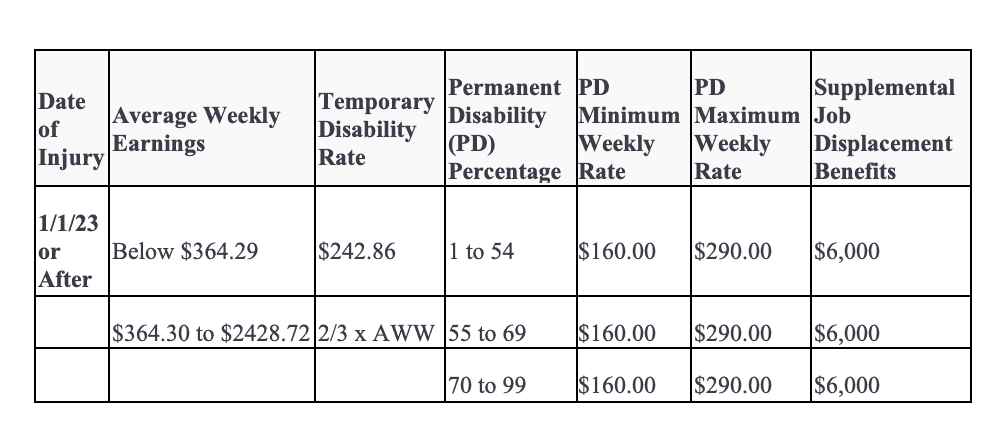At Ghitterman, Ghitterman & Feld, our Santa Barbara workers’ compensation attorneys have protected the rights of California residents since 1956. We understand that while most workers fully recover from job injuries, some suffer permanent disabilities that keep them from returning to work. For the permanently injured, their disability benefits are based on a “rating,” which is a percentage that estimates how much a disability limits the kinds of work the injured worker can do or their ability to earn a living. It also determines the amount of permanent disability benefits.
The California Department of Industrial Relations sets the permanent disability chart that determines the amount the injured worker receives. Here, we discuss what factors are determined when establishing each person’s rating.
What Factors Help Establish an Injured California Worker’s Permanent Disability Rating?
In California, permanent disability ratings are based on several factors:
- The medical condition outlined by a medical professional — independent or assigned through the employer’s workers’ compensation insurance approved list of physicians.
- The date of injury.
- The worker’s age when injured.
- The worker’s occupation, based on their job at the time of injury.
- How much of the disability was caused by the job, compared to how much was caused by other factors — referred to as “apportionment.”
The impairment number is put into a formula to calculate the percentage of disability. A rating of 100% means a permanent total disability. Ratings of 100% are very rare. A rating between 1% and 99% means a permanent partial disability.
Examples of permanent disabilities and permanent partial disability percentages include:
- Amputation of the index finger at the middle joint: 11%
- Total loss of vision in one eye, normal vision (20/20) in the other eye: 28%
How is the Amount of Permanent Disability Benefits Calculated in California?
Your percentage of disability equals a specific dollar amount, depending on the date of your injury and your average weekly wages at the time of injury.
In California, permanent disability benefits are usually two-thirds of the average weekly wage earned before the injury.
The state sets a minimum and maximum benefit, currently listed at:

What if I Disagree with the Medical Examiner’s Report?
If you disagree with the doctor’s evaluation of your disability status, you have rights and should receive a medically impartial assessment. Contact our skilled California workers’ compensation attorneys who will present your case to the proper parties to resolve your medical dispute so you can pursue the permanent disability benefits you are entitled to by law.
How Can Ghitterman, Ghitterman & Feld Help with My Permanent Disability Claim?
The California workers’ compensation attorneys at Ghitterman, Ghitterman & Feld have a record of proving our clients’ claims deserve a higher percentage rating because we know their livelihoods depend on it.
In addition, we exhaust all potential financial opportunities while handling their claims, including helping workers pursue the state’s Subsequent Injuries Benefits Trust Fund (SIBTF) for their complete needs.
Our attorneys specialize in SIBTF claims, which involve tapping into a California fund that provides additional workers’ compensation benefits to injured workers who have a pre-existing disability.
Our managing partners, Russell Ghitterman and Benjamin Feld, are both Certified Specialists in Workers’ Compensation with the State Bar of California, making ours one of the only law firms in the state to focus on important SIBTF cases.
We have six physical offices in Bakersfield, Fresno, Santa Barbara, Santa Maria, Ventura, and Visalia, and our top-tier technologies provide a virtual reach to serve clients throughout California. We offer free in-person, telephone, and virtual consultations to offer straightforward legal advice for your unique needs.
Contact us today to learn how we can help.

